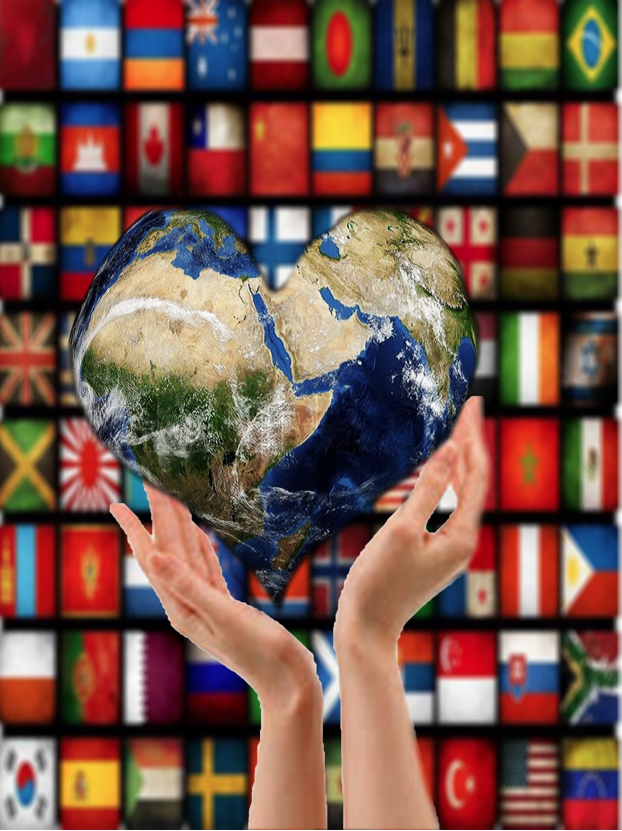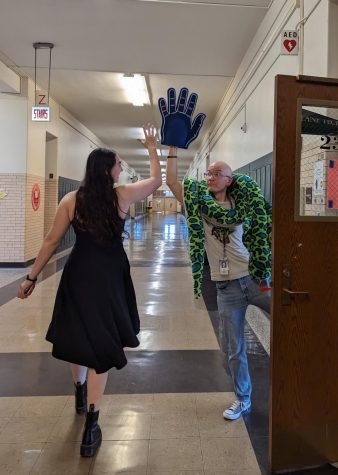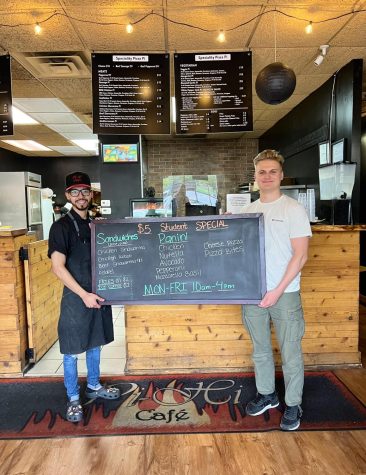An emotion expressed around the world
February 16, 2017
Love. Liebe. Ast. Cinta. Dragoste.
Love can be expressed in different ways in a variety of languages, but it is all the same emotion. Around the world, love is demonstrated in different manners of action depending on the culture.
In America, verbal usage of the words “I love you” is commonly used to express how much a person cares about another. However, in Germany, those words are not used as often to express love.
“Americans say “I love you” often and we usually don’t say it to a lot of people,” said German exchange student, Amrei Linder. “We hardly ever express those words to each other. Instead, we tend to show our love through really deep friendships on the base of trust. For us, trust is key in showing how much you love a person.”
Contradictory to the American culture, the German culture is not used to expressing their love through physical contact.
“We are weird, like we don’t hug as much as Americans do,” Linder said. “Our love is shown through friendships. If we say that somebody is a friend, that means that we trust them and it is a big deal to us.”
Friendships are also of high importance to the Puerto Rican culture. Though, they are more expressive when it comes to physical contact.
“They always say hi with a kiss,” said Sergio Cano, Div. 765. “ Like most hispanic families, they’re very warm and kind. When my family has a gathering, we individually greet each other and show we care by catching up.”
On the other hand, Pakistani culture emphasizes the expression of love in married couples. In Pakistani culture, weddings are a big celebration that can last for four days. Even though the culture is known for most of its marriages to be arranged within the family, that is not the case for all households.
“We tend to celebrate the wedding or union of two people very thoroughly so that both sides have an equal contribution to the wedding,” said Abdul Rafay, Div. 766. “It is four separate days and the big day is called the Shaadi which is planned by the woman’s part. The Valima is when the man pays the woman’s side back for the marriage and it’s considered to be like an extravagant after-party of the marriage. The Mehndi is the day in which the putting of the henna for the bride takes place and there is a period in which the bride can’t see her fiance. Each of the sides get two days to arrange the marriage.”
According to Rafay, weddings in the Pakistani culture are immensely important for the families to become united in the love that is shared with the couple that is getting married.
In Italian culture, food is a bigger priority for the expression of love between families, couples, and friends. Pasta is comfort food to those who are going through a difficult situation and just want to be cheered up.
“Italians are very passionate people and they express love through food,” said Italian teacher Ms. Paganelli. “It’s a big thing! Cooking good food, sharing good food with friends or family, taking care of people with food if somebody is feeling sick is how they express their love.”
To other cultures, such as the Belizean culture located in the Caribbean seas, food is not the main way of showing love.
“Belizeans are very giving and caring ,” said Keane Thompson, Div. 773. “They always show love to others, never expecting anything in return, whether it be gift giving or just checking up on you out of the blue. We usually joke around a lot and just try to demonstrate our love through both words and actions.”
According to Thompson, Belizeans value their relationships as much as they can and try to keep everyone happy as much as possible.
“There is really no specific way in which we celebrate love, love is shown yearly,” Thompson said.
Whether it be through food, gift-giving, friendships or marriages, all around the world cultures celebrate love in different manners. However, all of these cultures intend to show one same emotion which ties them all together.







